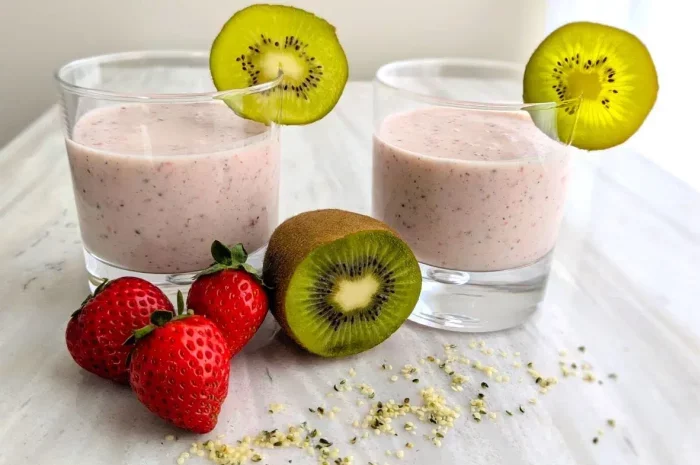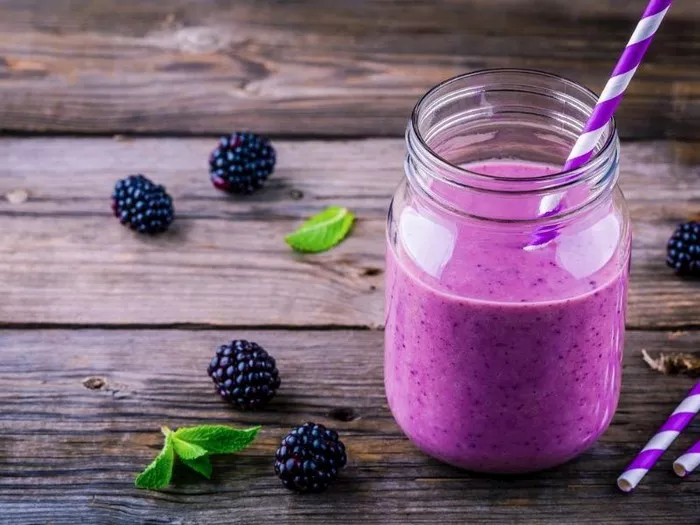Greek yogurt has become a staple in many kitchens, known for its creamy texture and tangy flavor. But beyond its delicious taste, this yogurt offers numerous benefits in baking. Whether you’re making cakes, bread, muffins, or cookies, Greek yogurt can significantly enhance your recipes. Let’s explore what Greek yogurt does in baking and how it can transform your culinary creations.
Enhances Moisture and Texture
One of the primary benefits of using Greek yogurt in baking is its ability to keep baked goods moist. Unlike regular yogurt, Greek yogurt has a thicker consistency due to its higher protein content. This makes it an excellent moisture retainer, ensuring your cakes, muffins, and bread stay soft and tender even after a few days.
Moisture Retention
Greek yogurt’s high protein content acts as a natural humectant, drawing and retaining moisture. This is particularly useful in cakes and muffins, where moisture can quickly escape, leading to dry, crumbly textures. By incorporating Greek yogurt, you ensure that your baked goods stay moist and delicious.
Creamy Texture
The creamy texture of Greek yogurt also contributes to the overall mouthfeel of your baked goods. It adds a richness that’s similar to using butter or oil but with fewer calories and fat. This makes it an ideal choice for those looking to create healthier baked goods without sacrificing taste or texture.
Adds Protein and Nutrients
Greek yogurt is a nutritional powerhouse, packed with protein, calcium, and probiotics. When you use it in baking, you’re not only enhancing the flavor and texture but also boosting the nutritional value of your final product.
High Protein Content
With up to double the protein of regular yogurt, Greek yogurt is an excellent way to add more protein to your baked goods. This is particularly beneficial for athletes, bodybuilders, or anyone looking to increase their protein intake. It also helps keep you feeling full longer, making your baked goods a more satisfying snack or meal.
Calcium and Probiotics
In addition to protein, Greek yogurt is rich in calcium and probiotics. Calcium is essential for bone health, while probiotics support gut health by promoting the growth of beneficial bacteria. By incorporating Greek yogurt into your baking, you’re adding these essential nutrients to your diet in a delicious and convenient way.
Acts as a Fat Substitute
Greek yogurt can be used as a healthier alternative to fats like butter, oil, and sour cream in baking. It adds moisture and flavor without the added calories and saturated fats found in these ingredients.
Reduced Fat Content
Unlike regular yogurt, Greek yogurt is strained to remove excess whey, resulting in a thicker product with less lactose and fat. This makes it an ideal low-fat option for baking. You can replace some or all of the butter or oil in your recipes with Greek yogurt, reducing the overall fat content without compromising taste or texture.
Healthy Fats
While Greek yogurt is lower in fat than some traditional baking ingredients, it still contains healthy fats in the form of medium-chain triglycerides (MCTs). These fats are easily digested and can help improve metabolic rate and fat burning. So, even though you’re reducing the overall fat content, you’re still getting some healthy fats from the Greek yogurt.
Improves Baking Results
Greek yogurt can improve the overall success of your baking endeavors, thanks to its acidity, ability to tenderize gluten, and its role as a natural leavening agent.
Acidity
Greek yogurt has a slightly acidic pH, which can help activate baking soda and other leavening agents. This results in baked goods that rise higher and have a lighter, fluffier texture. The acidity also helps to balance the sweetness of your recipes, creating a more balanced and complex flavor profile.
Tenderizes Gluten
Gluten is the protein found in wheat and other grain-based flours that gives baked goods their structure and elasticity. However, too much gluten can result in baked goods that are tough and chewy. Greek yogurt contains lactic acid, which helps to break down gluten strands, making your baked goods softer and more tender.
Natural Leavening Agent
As an acidic ingredient, Greek yogurt can react with baking soda to produce carbon dioxide gas. This gas helps baked goods rise and achieve a light, airy texture. While it’s not as potent as commercial yeast, Greek yogurt can act as a natural leavening agent, especially in recipes that call for minimal or no yeast.
Versatility in Baking
Greek yogurt’s versatility makes it a great addition to a wide range of baked goods. From sweet treats to savory dishes, Greek yogurt can be used in various ways to enhance your recipes.
Cakes and Muffins
Greek yogurt adds moisture, richness, and protein to cakes and muffins. It also helps to create a tender crumb and a soft, velvety texture. You can replace some or all of the butter, oil, or milk in your recipes with Greek yogurt for healthier, more nutritious results.
Bread
Incorporating Greek yogurt into bread recipes can result in a softer crumb and a longer shelf life. The lactic acid in Greek yogurt helps to tenderize the gluten, making the bread more tender and easier to digest. It also acts as a natural preservative, keeping the bread fresher for longer.
Cookies
Greek yogurt can be used to make healthier cookies that are still soft, chewy, and delicious. It adds moisture and protein, helping to keep the cookies from drying out. You can use it to replace some of the butter or oil in your recipes, reducing the overall fat content.
Pancakes and Waffles
Adding Greek yogurt to pancake and waffle batter creates a lighter, fluffier texture and a richer flavor. It also helps to keep the batter from becoming too thick or sticky, making it easier to work with.
Savory Dishes
While Greek yogurt is commonly used in sweet baking, it can also be incorporated into savory dishes like pizza dough, focaccia, and flatbreads. The acidity helps to create a better rise and a more tender crumb, while the richness adds flavor and moisture.
Tips for Using Greek Yogurt in Baking
When using Greek yogurt in baking, there are a few tips to ensure success:
Consistency
Greek yogurt can vary in consistency depending on how much whey is strained out. For baking, it’s best to use a thicker, full-fat Greek yogurt. If your yogurt is too runny, you can strain it further using a cheesecloth or fine-mesh strainer to remove excess whey.
Flavor
Greek yogurt has a tangy flavor that can be quite strong in some recipes. If you’re not a fan of tangy flavors, you can mix it with some milk or cream to dilute it. Alternatively, you can use vanilla or flavored Greek yogurt to add an extra layer of taste to your baked goods.
Substitution Ratios
When replacing butter, oil, or milk with Greek yogurt, start with a 1:1 ratio and adjust as needed. Greek yogurt is thicker than these ingredients, so you may need to add a bit more liquid to achieve the desired consistency.
Storage
Baked goods made with Greek yogurt tend to stay moist for longer. However, they can also become overly dense if stored for too long. To keep your baked goods fresh, store them in an airtight container and consume within a few days.
Conclusion
Greek yogurt is a versatile and nutritious ingredient that can significantly enhance your baking. It adds moisture, richness, and protein to your recipes, resulting in baked goods that are softer, more tender, and more nutritious. Whether you’re making cakes, bread, muffins, cookies, or savory dishes, Greek yogurt can help you achieve better results. So, why not give it a try and see how it transforms your baking? With its many benefits and delicious flavor, Greek yogurt is a must-have in any baker’s kitchen.
Related Topics:























